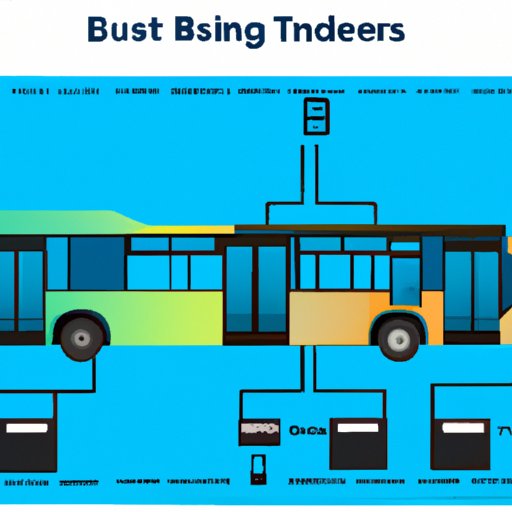Introduction
A bus is a communication system that allows different components in a computer to communicate with each other. It is an integral part of computer architecture, as it enables the transfer of data and instructions between components such as the processor, memory, and peripherals. In this article, we will explore the role of the bus in computer architecture and design, and examine the significance of the bus in modern computing.

Exploring the Role of the Bus in Computer Architecture
The bus is responsible for connecting the different components inside a computer. It acts as a conduit for data and instructions, allowing them to be passed from one component to another. The bus consists of two main parts: the address bus and the data bus. The address bus is used to send out the location of the data, while the data bus is used to send out the actual data.
The bus is also responsible for transmitting various types of data. This includes instructions from the processor, data from memory and input/output devices, and control signals from the control unit. All of these types of data are sent over the bus, allowing the different components of the computer to interact with each other.
Understanding the Basics of Bus Technology and Its Impact on Computing
Bus technology is based on specific protocols, which define the rules for how data is transferred over the bus. Common bus protocols include PCI (Peripheral Component Interconnect), ISA (Industry Standard Architecture), and AGP (Accelerated Graphics Port). Each protocol has its own set of features and specifications, which determine how data is transmitted over the bus.
The use of bus technology has both advantages and disadvantages. On the plus side, it allows for faster data transmission, since all the components are connected together. It also reduces the amount of wiring needed inside the computer, making it more compact and efficient. On the downside, there is less flexibility with bus technology, since all the components must adhere to the same protocol.

Breaking Down the Technicalities of Bus Interconnections in Computers
Bus interconnections allow different components to communicate with each other. There are several types of bus interfaces, including serial, parallel, and USB (Universal Serial Bus). Serial interfaces transmit data bit by bit, while parallel interfaces transmit multiple bits at the same time. USB is a type of serial interface that is commonly used to connect peripherals such as keyboards, mice, and printers.
In order for the components to communicate with each other, they must be connected to the same bus. This is done using an adapter, which converts the signals from one type of bus to another. For example, a PCI adapter can be used to convert a PCI signal into a USB signal. Once the components are connected, they can exchange data and instructions through the bus.

Examining the Significance of the Bus in Modern Computer Design
The bus plays an important role in modern computer design, especially in multi-core systems. In a multi-core system, the bus is responsible for connecting the different cores together, allowing them to share data and instructions. This allows the system to run multiple threads simultaneously, improving its performance.
The bus is also used to improve performance in other ways. For example, it can be used to increase the speed of data transfers, or reduce the amount of power consumed. By optimizing the bus, engineers can create faster and more efficient computers.
Conclusion
The bus is an essential part of computer architecture, as it enables the different components inside a computer to communicate with each other. It is based on specific protocols, which define how data is transmitted over the bus. Additionally, the bus is used to improve performance in multi-core systems, and to make computers more efficient. In conclusion, the bus is a key component of computer design, and its importance cannot be overstated.


